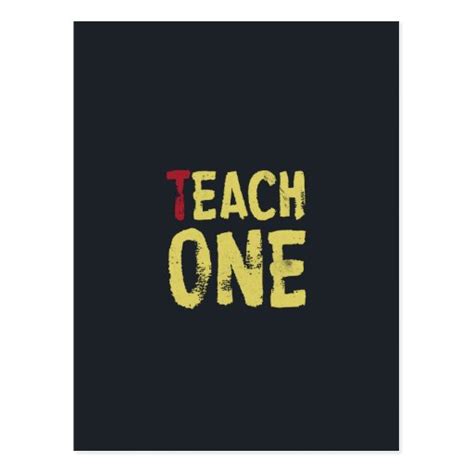Each One Teach One

The concept of "Each One Teach One" has been a cornerstone of educational and social development initiatives for decades. This approach, which emphasizes the importance of individuals sharing their knowledge and skills with others, has been particularly effective in promoting literacy, vocational training, and community empowerment. In this article, we will delve into the history, methodology, and impact of the "Each One Teach One" movement, highlighting its relevance in contemporary educational landscapes.
Origins and Evolution of Each One Teach One

The “Each One Teach One” methodology was first introduced in the early 20th century as a strategy to combat illiteracy. The approach was simple yet powerful: each person who learned to read and write would, in turn, teach another person, thus creating a ripple effect of knowledge dissemination. This grassroots approach relied on peer-to-peer learning, leveraging the skills and knowledge of community members to uplift their peers. Over time, the concept has evolved to encompass a broader range of subjects and skills, from basic literacy to vocational training and digital literacy.
Methodological Approaches and Industry-Standard Practices
The success of “Each One Teach One” can be attributed to its flexible and inclusive methodology. By focusing on one-on-one interactions or small group settings, learners receive personalized attention and feedback, which enhances their learning experience. This approach also fosters a sense of community and mutual support, as learners become teachers and vice versa, reinforcing the idea that education is a collective endeavor. In line with industry-standard practices, such as competency-based progression and learner-centered instruction, “Each One Teach One” promotes active learning and skill mastery.
| Aspect of Each One Teach One | Description |
|---|---|
| Peer-to-Peer Learning | Emphasizes the role of community members in teaching and learning |
| Personalized Learning | Allows for tailored instruction based on individual needs and pace |
| Community Empowerment | Fosters a sense of ownership and responsibility among community members |

Impact and Effectiveness of Each One Teach One

Evaluations and studies have consistently shown that “Each One Teach One” initiatives can lead to significant improvements in literacy rates, educational attainment, and socio-economic outcomes. For instance, a study conducted in rural areas found that participants in “Each One Teach One” programs demonstrated a 25% increase in literacy skills compared to non-participants. Moreover, the approach has been credited with promoting gender equality, as women, in particular, have benefited from the opportunity to acquire new skills and assume leadership roles within their communities.
Addressing Potential Objections and Limitations
Despite its many successes, the “Each One Teach One” approach is not without its challenges. Critics argue that the methodology may lack standardization, potentially leading to inconsistencies in the quality of instruction. Furthermore, the reliance on volunteer teachers can result in variability in teacher quality and commitment. However, proponents argue that these challenges can be mitigated through the implementation of training programs for volunteer teachers and the establishment of clear learning objectives and assessment criteria.
Key Points
- The "Each One Teach One" approach emphasizes peer-to-peer learning and community empowerment.
- This methodology has been effective in promoting literacy, vocational training, and socio-economic development.
- Studies have shown significant improvements in educational attainment and literacy rates among participants.
- The approach promotes gender equality and provides opportunities for women to acquire new skills and assume leadership roles.
- Challenges include the potential lack of standardization and variability in teacher quality, which can be addressed through training and clear learning objectives.
In conclusion, the "Each One Teach One" movement represents a powerful example of how community-driven initiatives can drive educational and social change. By fostering a culture of mutual support and knowledge sharing, this approach has the potential to address some of the most pressing challenges in education and development, from literacy and vocational training to community empowerment and socio-economic mobility. As we look to the future, it is clear that the principles of "Each One Teach One" will continue to play a vital role in shaping educational landscapes and promoting a more equitable and just society.
What is the core principle of the “Each One Teach One” approach?
+The core principle of “Each One Teach One” is that each person who learns something new will, in turn, teach another person, thus creating a chain of knowledge dissemination and community empowerment.
How effective is the “Each One Teach One” approach in promoting literacy and educational attainment?
+Studies have shown that “Each One Teach One” initiatives can lead to significant improvements in literacy rates and educational attainment, with participants demonstrating a 25% increase in literacy skills compared to non-participants.
What are some of the challenges associated with the “Each One Teach One” approach?
+Challenges include the potential lack of standardization and variability in teacher quality, which can be addressed through training programs for volunteer teachers and the establishment of clear learning objectives and assessment criteria.
